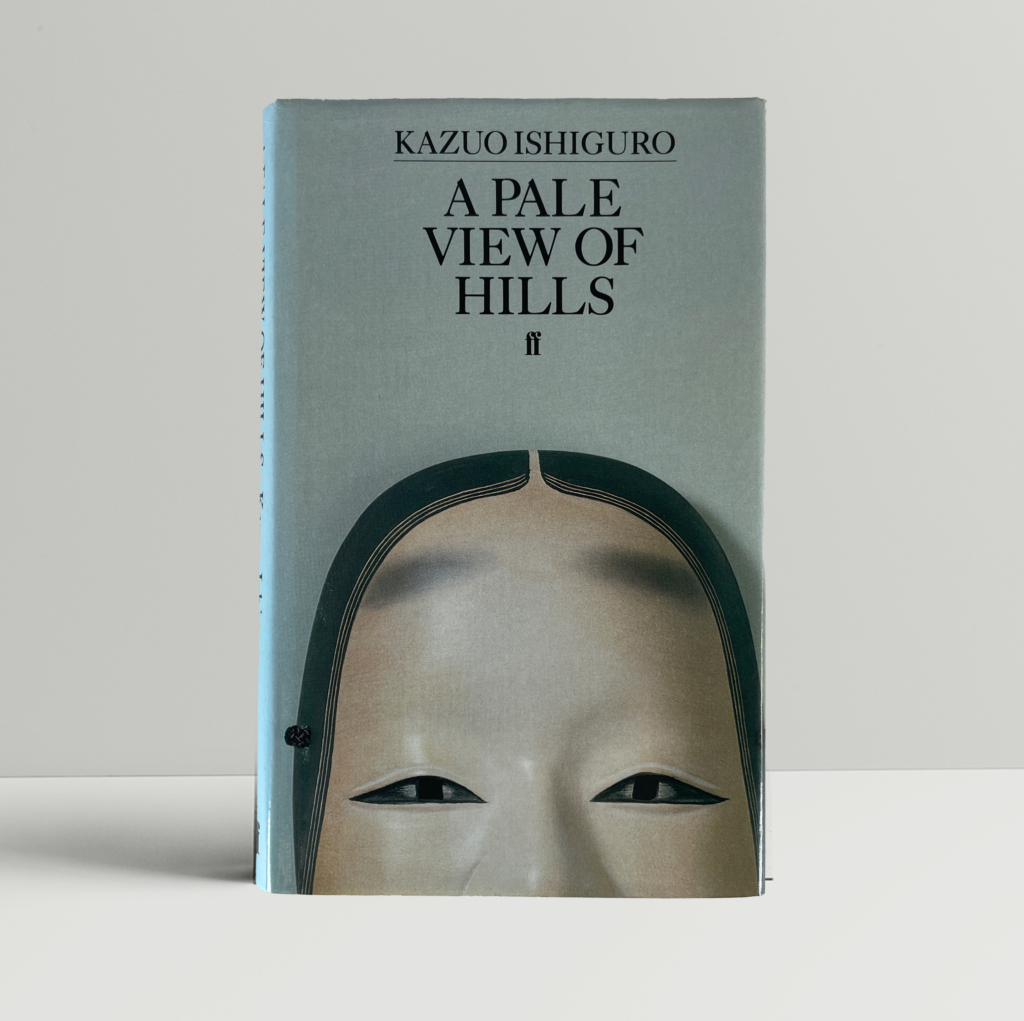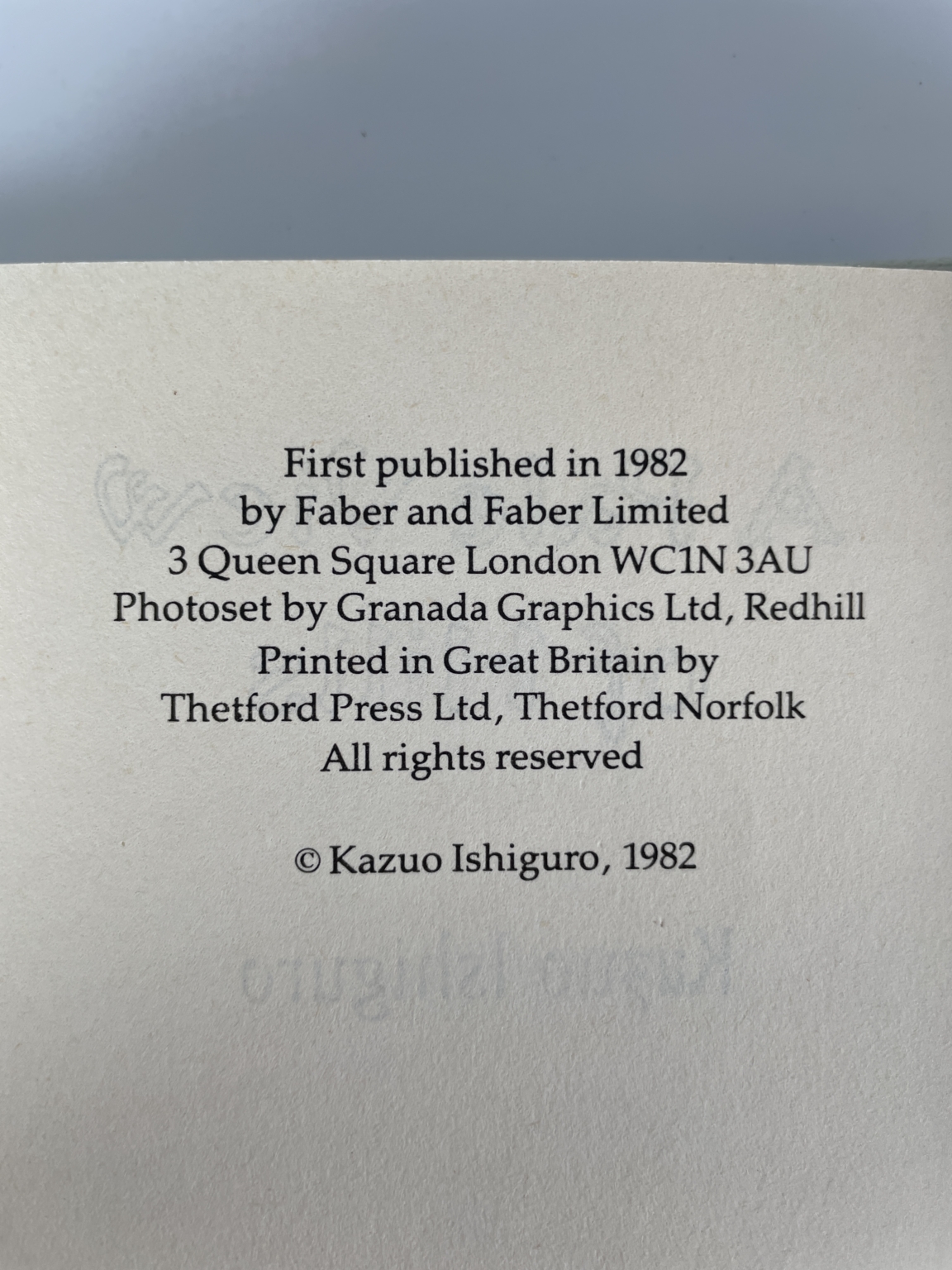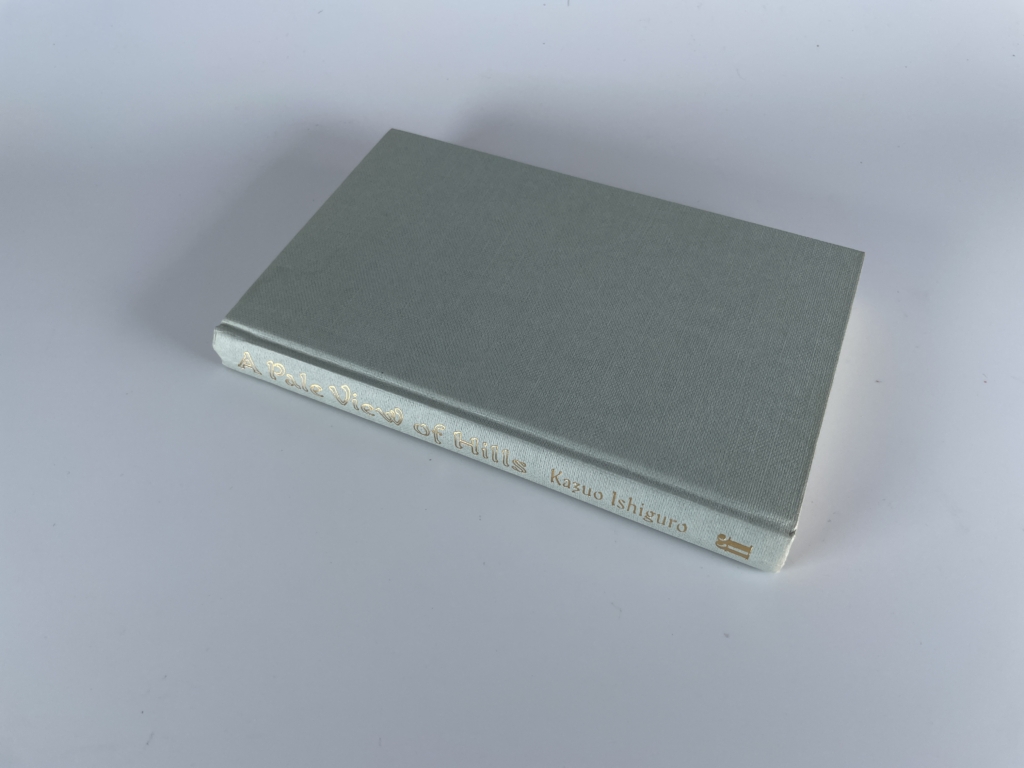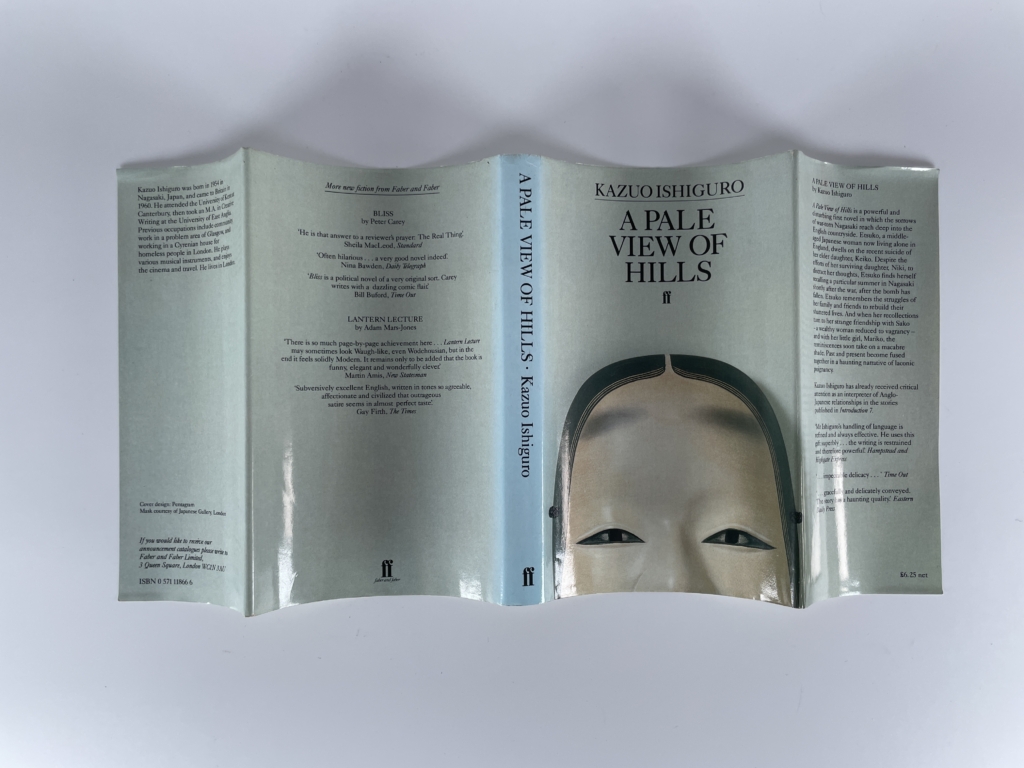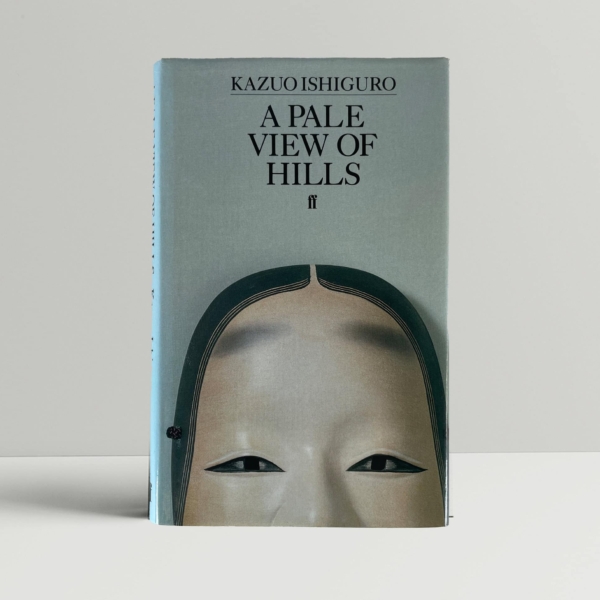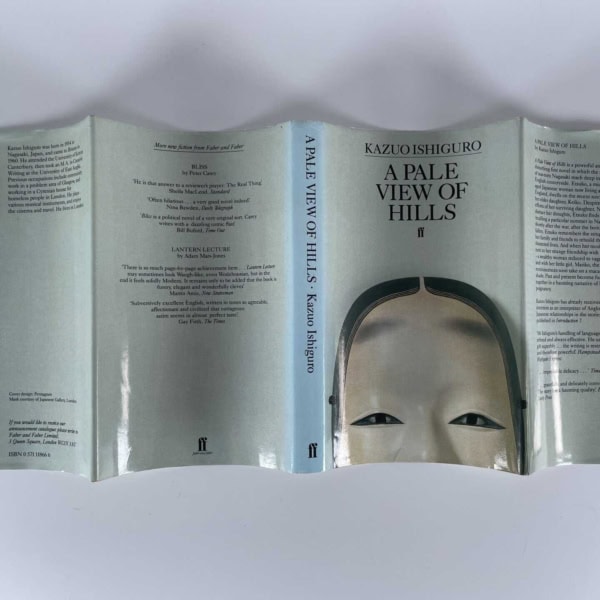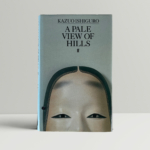Kazuo Ishiguro – A Pale View of Hills – First Edition 1982
£1,350.00
A first edition, first printing of A pale View of Hills by Kazuo Ishiguro, published by Faber in 1982. A near fine book free from internal inscriptions, the boards bound in publisher’s original dove grey cloth with gilt titling to the spine, pushing to the head of the spine and slight fading to the foot, text blocks bright and crisp, minor spotting to front and rear free end papers. In a near fine unclipped wrapper with some fading to spine and pushing to head of spine and top knuckles of front and rear flap folds.
A Pale View of Hills by Kazuo Ishiguro is a haunting novel that explores memory, loss and the complexities of human relationships. Set in post-war Japan, it follows Etsuko, a Japanese widow living in England, as she reflects on her past, particularly her friendship with a troubled woman named Sachiko. The narrative blurs the lines between past and present, reality and imagination, delving into the unreliability of memory and the quiet, pervasive effects of trauma.
(We don't keep all of our stock in the shop, so send us an email if you're planning a trip to see a particular author or book.)
- Description
Description
A first edition, first printing of A pale View of Hills by Kazuo Ishiguro, published by Faber in 1982. A near fine book free from internal inscriptions, the boards bound in publisher’s original dove grey cloth with gilt titling to the spine, pushing to the head of the spine and slight fading to the foot, text blocks bright and crisp, minor spotting to front and rear free end papers. In a near fine unclipped wrapper with some fading to spine and pushing to head of spine and top knuckles of front and rear flap folds.
A Pale View of Hills by Kazuo Ishiguro is a haunting novel that explores memory, loss and the complexities of human relationships. Set in post-war Japan, it follows Etsuko, a Japanese widow living in England, as she reflects on her past, particularly her friendship with a troubled woman named Sachiko. The narrative blurs the lines between past and present, reality and imagination, delving into the unreliability of memory and the quiet, pervasive effects of trauma.

